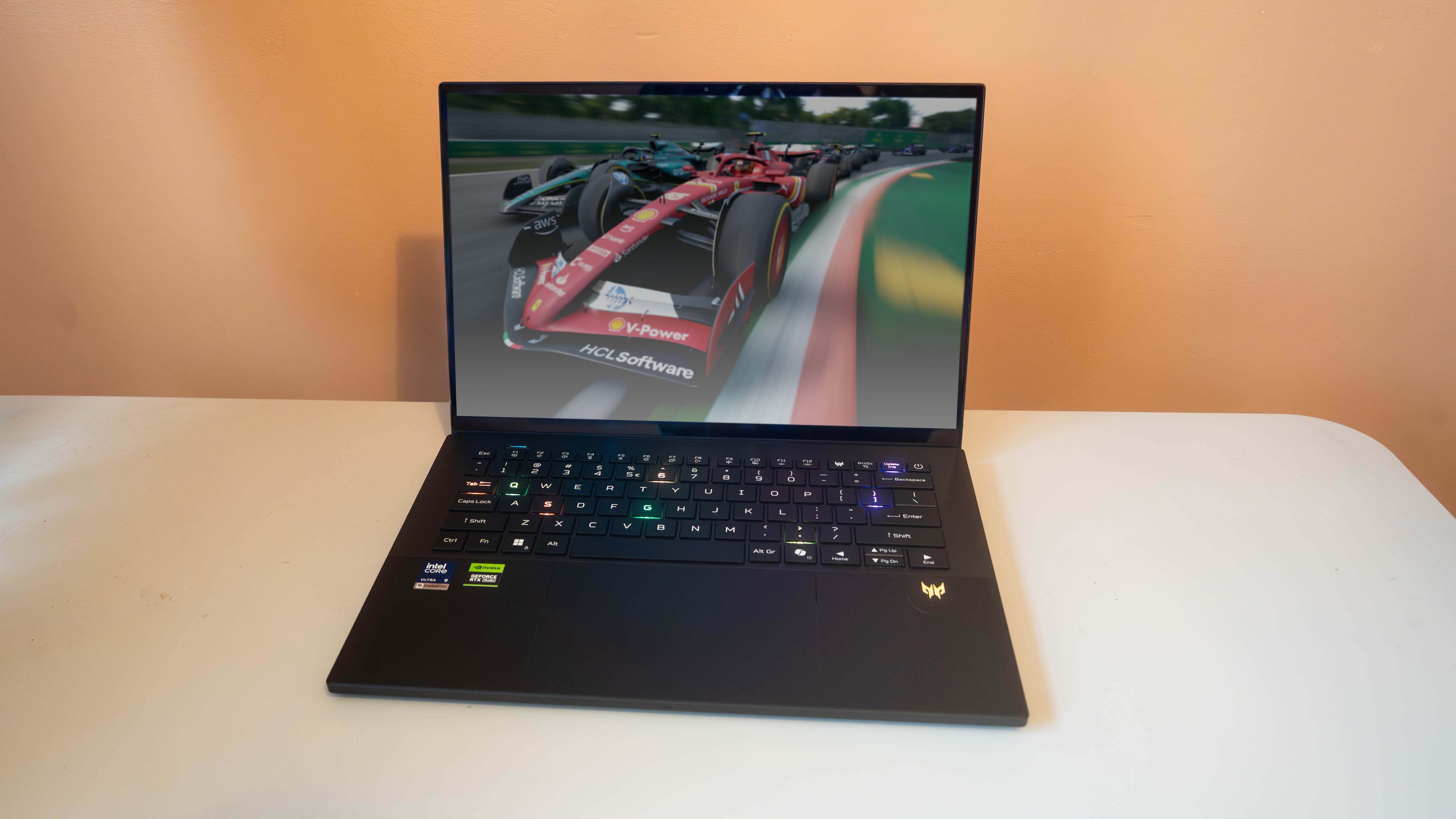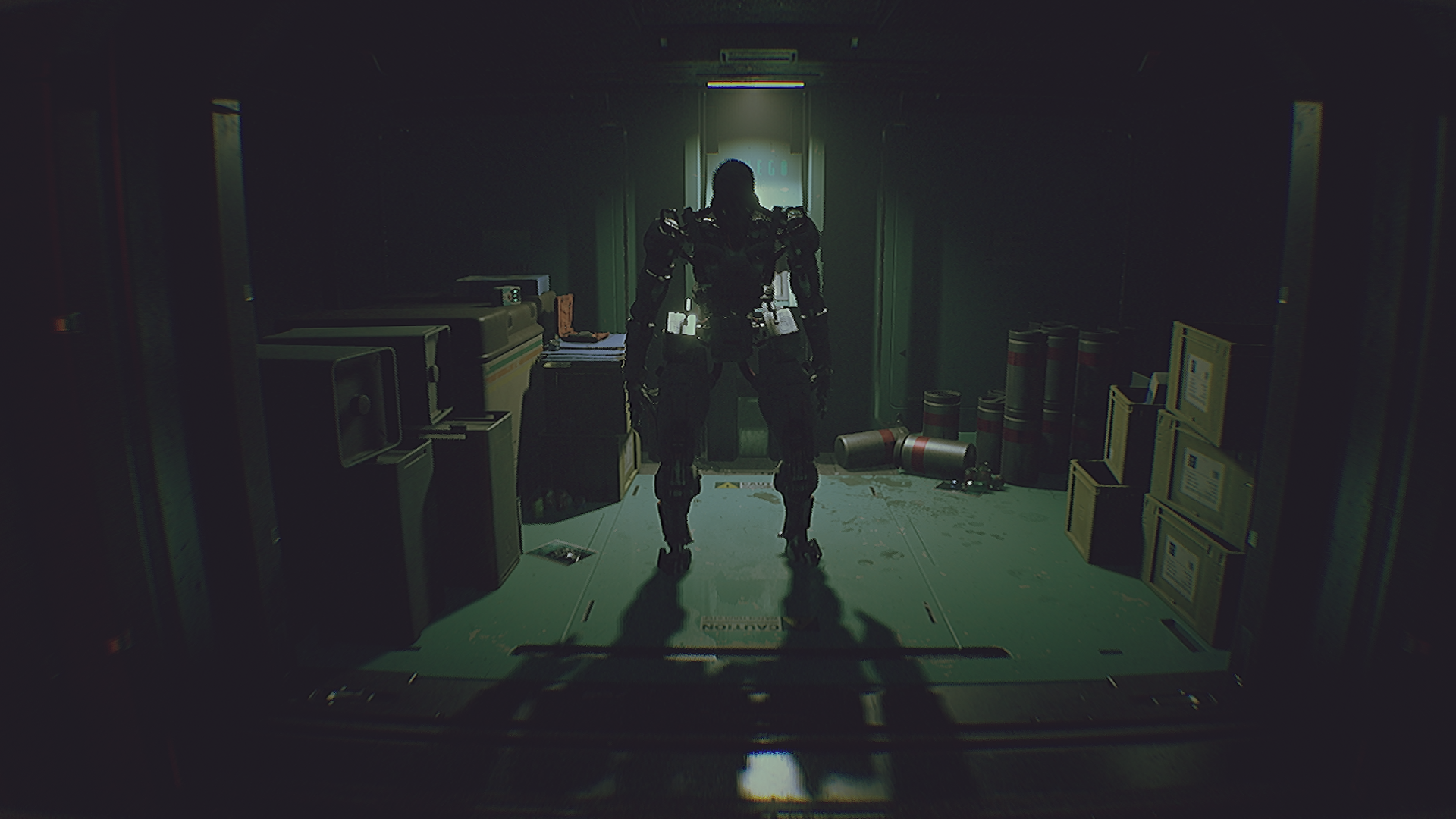Our Verdict
The Acer Predator Triton 14 AI looks good on paper, with chips from the newest generations of Intel and Nvidia. And when it comes to gaming it's got the goods too, though it can't quite decide whether it wants to be a gaming or creative machine. What lets it down is that similar laptops from Asus and Razer are cheaper and can perform better, which rather kicks the legs out from under the Triton.
For
- Performs okay (complimentary)
- Lovely 120Hz OLED
- Graphene-based thermal paste!!!
Against
- Performs okay (derogatory)
- Picky about chargers
- What do you mean the Razer is cheaper?!
PC Gamer's got your back
Use the charger that comes in the box. That's the main thing I'm taking away from my time with the Acer Predator Triton 14 AI. Usually, I can rely on the USB-C charger that lives on my desk to power just about anything (apart from those Lenovo laptops that insist on using their proprietary power plug), but this time it wasn't to be. Unless fed with the right number of Watts in the right sort of way, the Triton refused to give up the goods and unlock its Turbo mode, providing lacklustre benchmark scores.
Having cast some runes, spoken with the winds, examined the entrails of a pigeon being eaten by a red kite in the road just outside my house, and consulted ChatGPT—all of which had about the same level of accuracy—it took a consultation with PCG's own sage and oracle Dave to get to the bottom of the problem. There are multiple lessons here, not the least of which is that red kites are bloody brilliant and we should have more of them to keep those pigeons in check.
The Triton (minor Greek god of the sea, largest moon of Neptune, Mitsubishi pickup truck also known as the L200) is marketed as a gaming laptop but comes with an Nvidia Studio sticker on the front and Studio drivers pre-installed for the GPU. There's a stylus in the box too, suggesting a more creative life is envisaged for this particular machine, though there's nowhere to keep it on the laptop body so it's destined to sit in a drawer somewhere, and it only works on the touchpad rather than the touchscreen.
It's the work of seconds to switch the drivers over to the Gaming version, but in testing this only provided a 2% increase in benchmark scores. Using the right charger and pressing the dedicated button above the F1 key to put the machine in Turbo mode (the bizarrely named PredatorSense software will do the job, too) turned out to make a much larger difference to its performance.
CPU | Intel Core Ultra 9 288V |
Graphics | Nvidia GeForce RTX 5070 8GB (110 W) |
Memory | 32 GB LPDDR5X |
Storage | 1 TB SSD, MicroSD |
Screen size | 14-inch |
Screen type | OLED |
Resolution | 2880 x 1800 |
Refresh rate | 120 Hz |
Ports | HDMI, 2x USB 3.2 Gen 2 Type-A, 1x Thunderbolt 4, 1x USB 3.2 Gen 2 Type-C, 3.5 mm audio |
Wireless connectivity | Wi-Fi 7, Bluetooth 5.4 |
Battery | 76 Wh |
Dimensions | 17.3 x 322 x 221 mm |
Weight | 1.6 kg |
Price |
✅ You're after a jack of all trades: You really like the idea of using a laptop with a stylus to take notes, before rendering some video effects in Premiere Pro and heading home for a quick blast of Battlefield 6.
❌ Pure gaming is your focus: There are alternatives that will squeeze more frames out of your games, and you won't have to worry about where the stylus went.
Try and quell your excitement for a second, if you can, but the Triton 14 AI is the first laptop in the whole world (it says here) to use a graphene-based thermal compound in its cooling system. I know. There's also a vapour chamber and a couple of fans too—which make some noise, but that's only to be expected—and it all does a decent job of shifting the heat even if there are two vents on the base of the machine where they're likely to get blocked by your trousers. There are some speakers underneath too, small grilles that are part of a six-speaker system that also has tiny outlets on the sides of the laptop. I couldn't find the other two, but their location barely matters in a laptop.
While the sound the Triton is capable of making is okay, with some nice clear voices, it still suffers from the curse of small speakers everywhere and you'll be much better off with one of the best headsets or some reasonably priced desktop speakers.
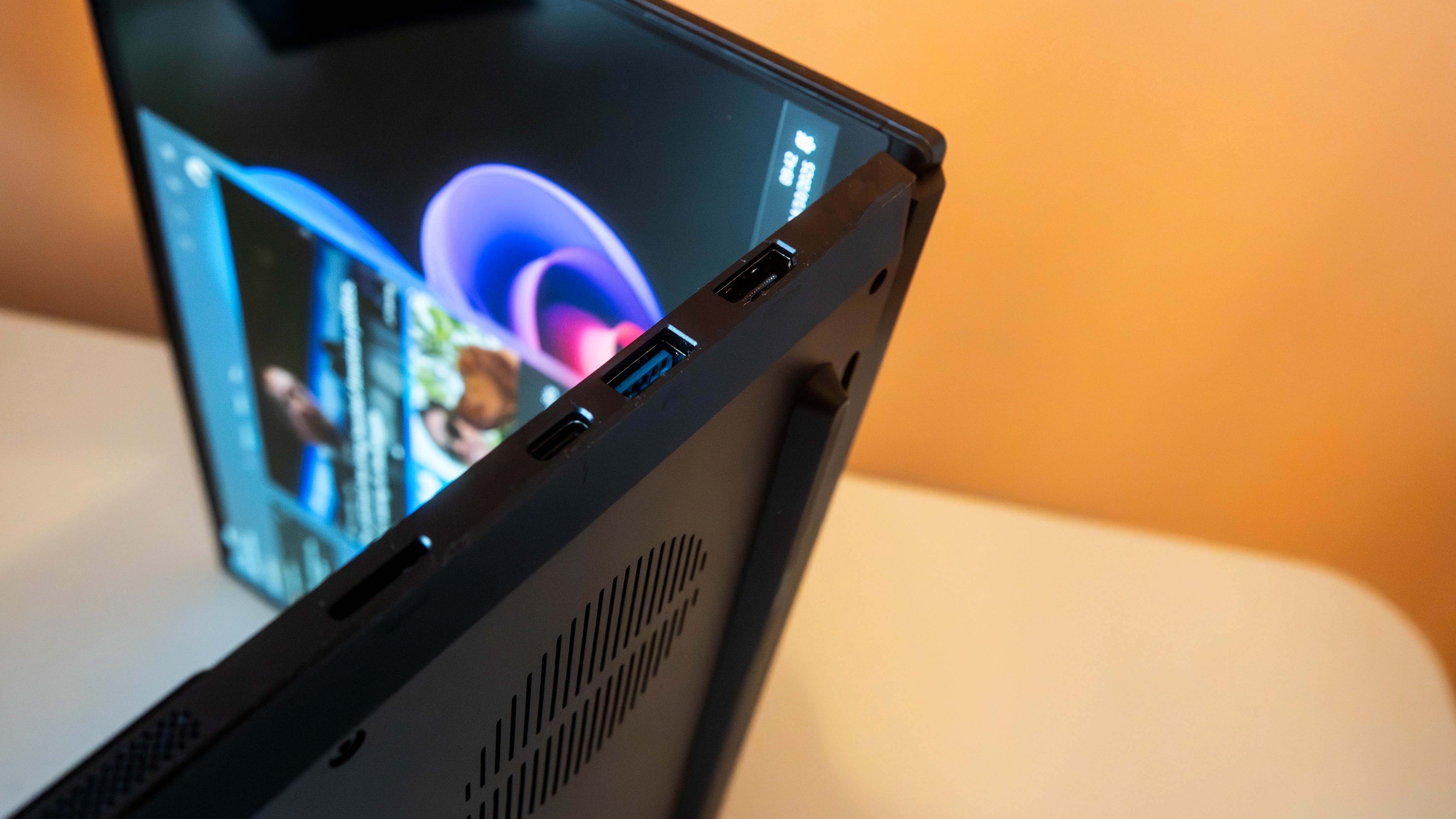
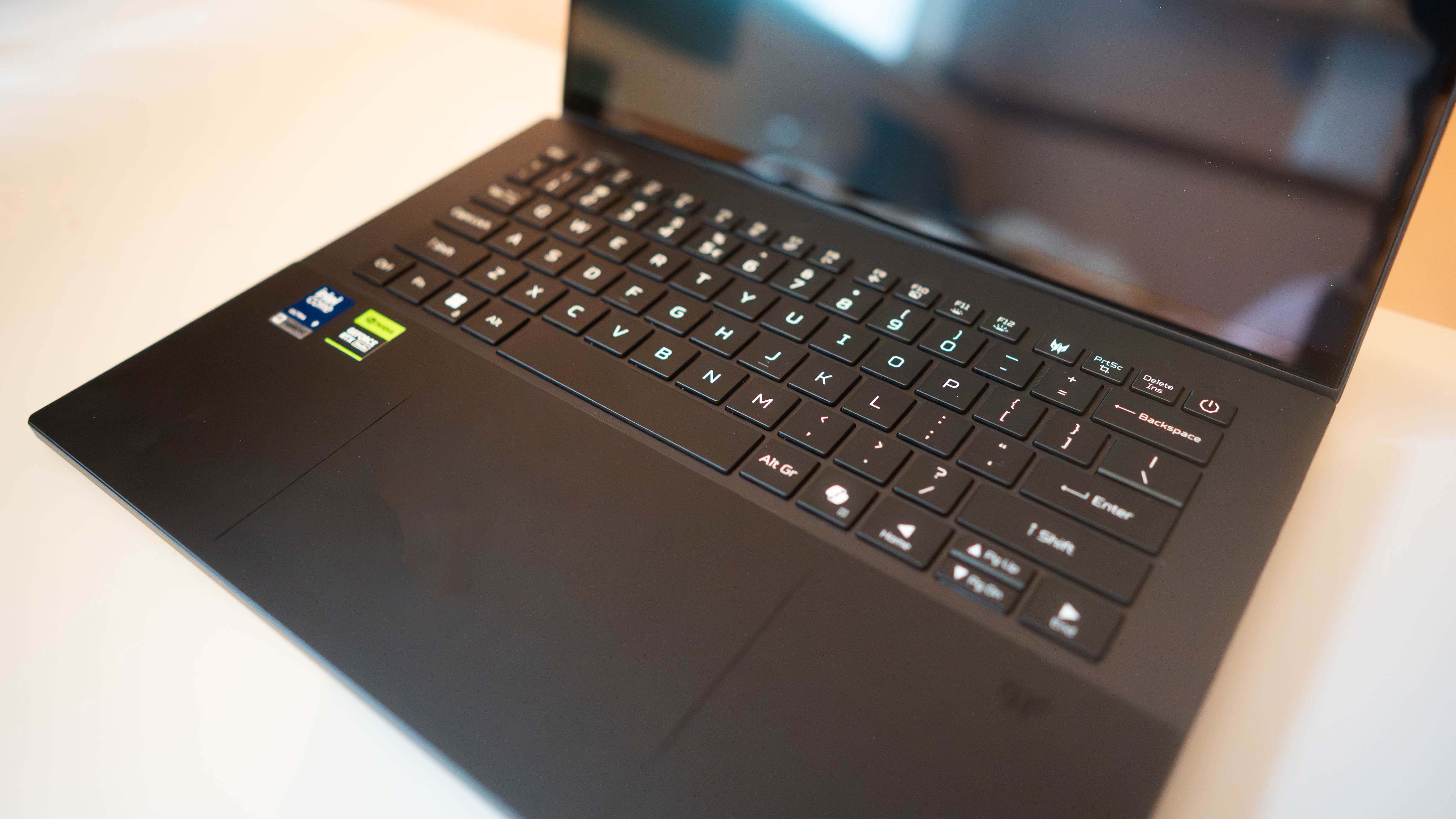
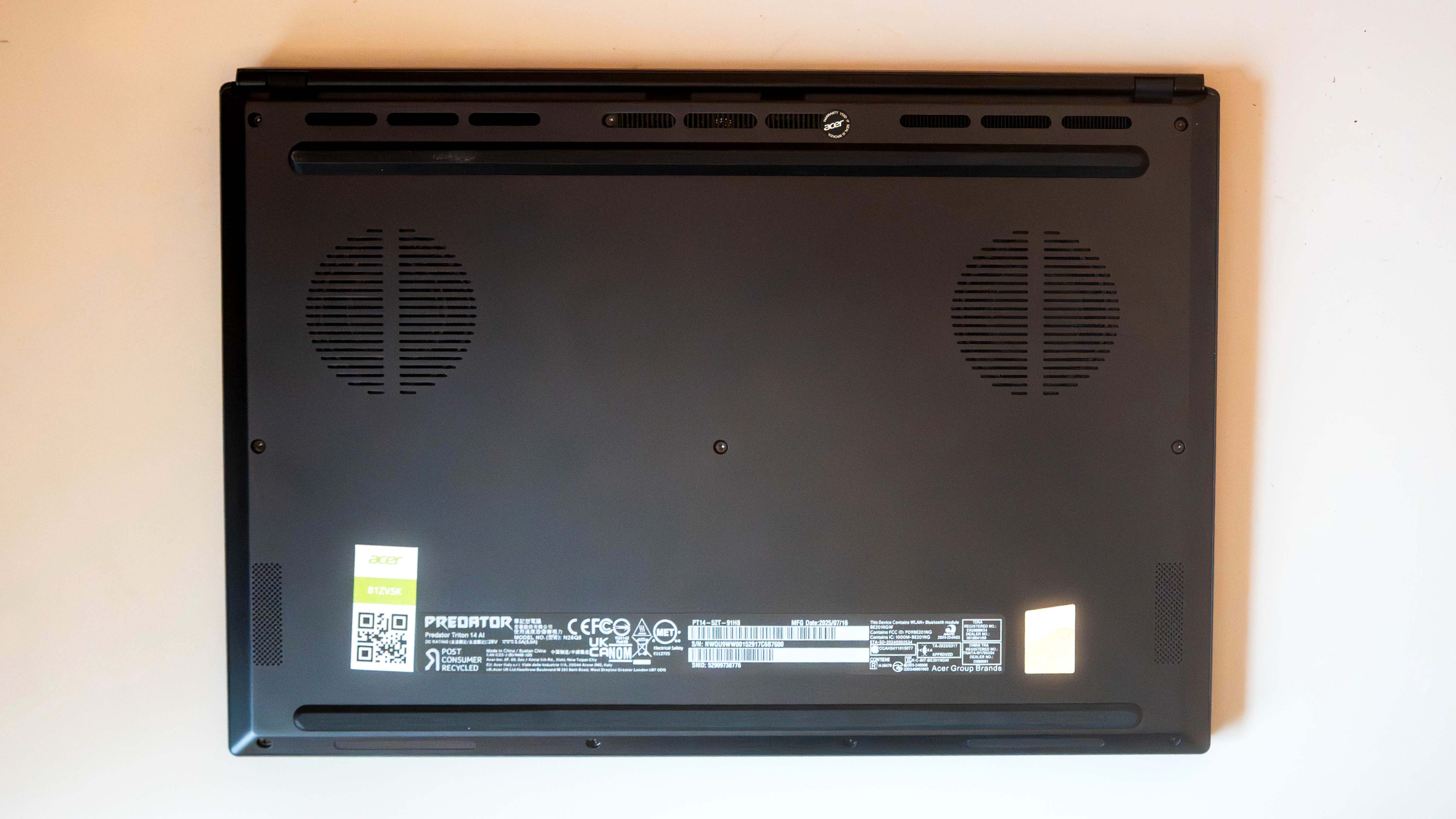
What you get here is a nicely proportioned 14-inch laptop that's not too thick, has an OLED touchscreen attached and comes in a flat-sided metal casing. One of the ports around the outside is a Thunderbolt 4 connection, but you'll be hard-pressed to know which one as Acer has chosen not to put a logo on it and it looks identical to the USB 3.2 port on the other side. One of the Type-C ports—possibly the USB 3.2—is so close to its neighbouring USB-A that if you have the old-style dongle for an Xbox controller in it the adjoining port is blocked, which seems like a bit of a design flaw for a gaming laptop.
Keep up to date with the most important stories and the best deals, as picked by the PC Gamer team.
While we're talking design, it's disappointing that Acer makes it so hard to get into the machine, with ten tiny torx screws a real barrier to entry for the consumer. Sure, you can only upgrade the SSD anyways, but with just a 1 TB option in the particular config we've been reviewing and no extra SSD slot available, that's something you might well want to do in the future. Though there are Triton 14 AI options available for a similar price with a 2 TB drive inside.
There's no mistaking the full-size HDMI port, however, and while the 2.8K 16:10 OLED is very nice, hitting 400 nits in SDR mode in our tests and putting out a pretty wide gamut of colour too, hooking it up to an external screen really allows the RTX 5070 to shine.
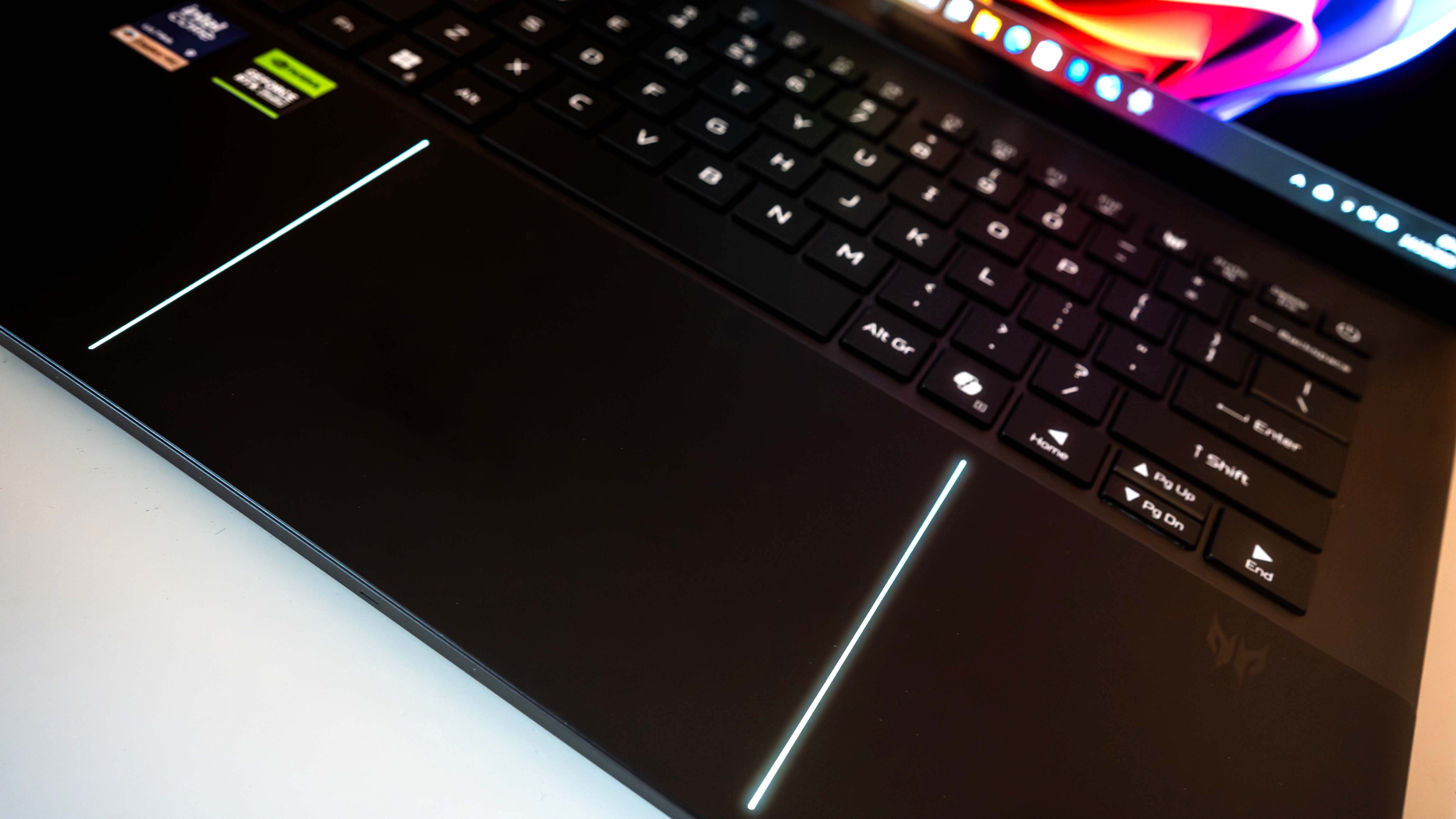
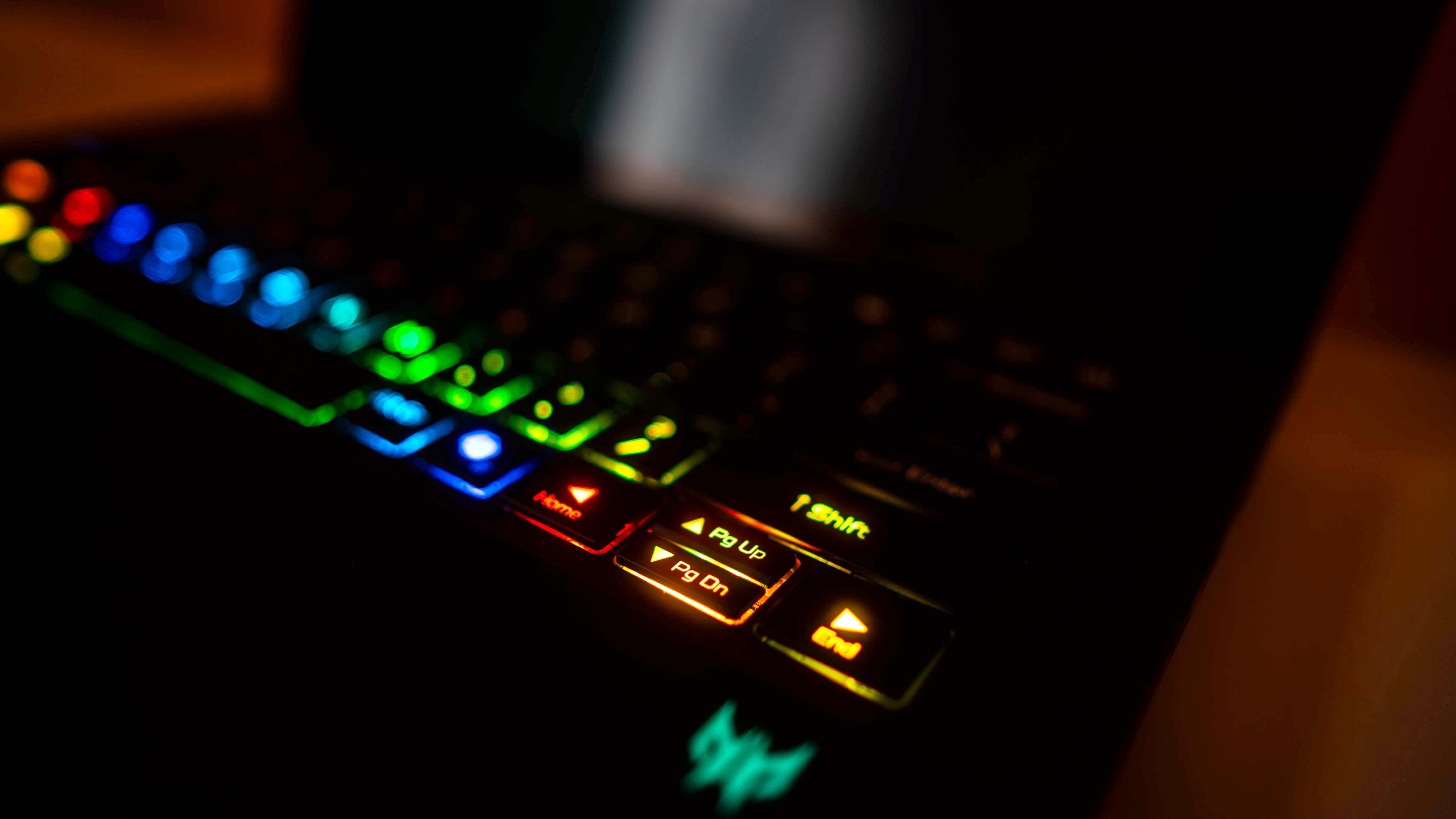
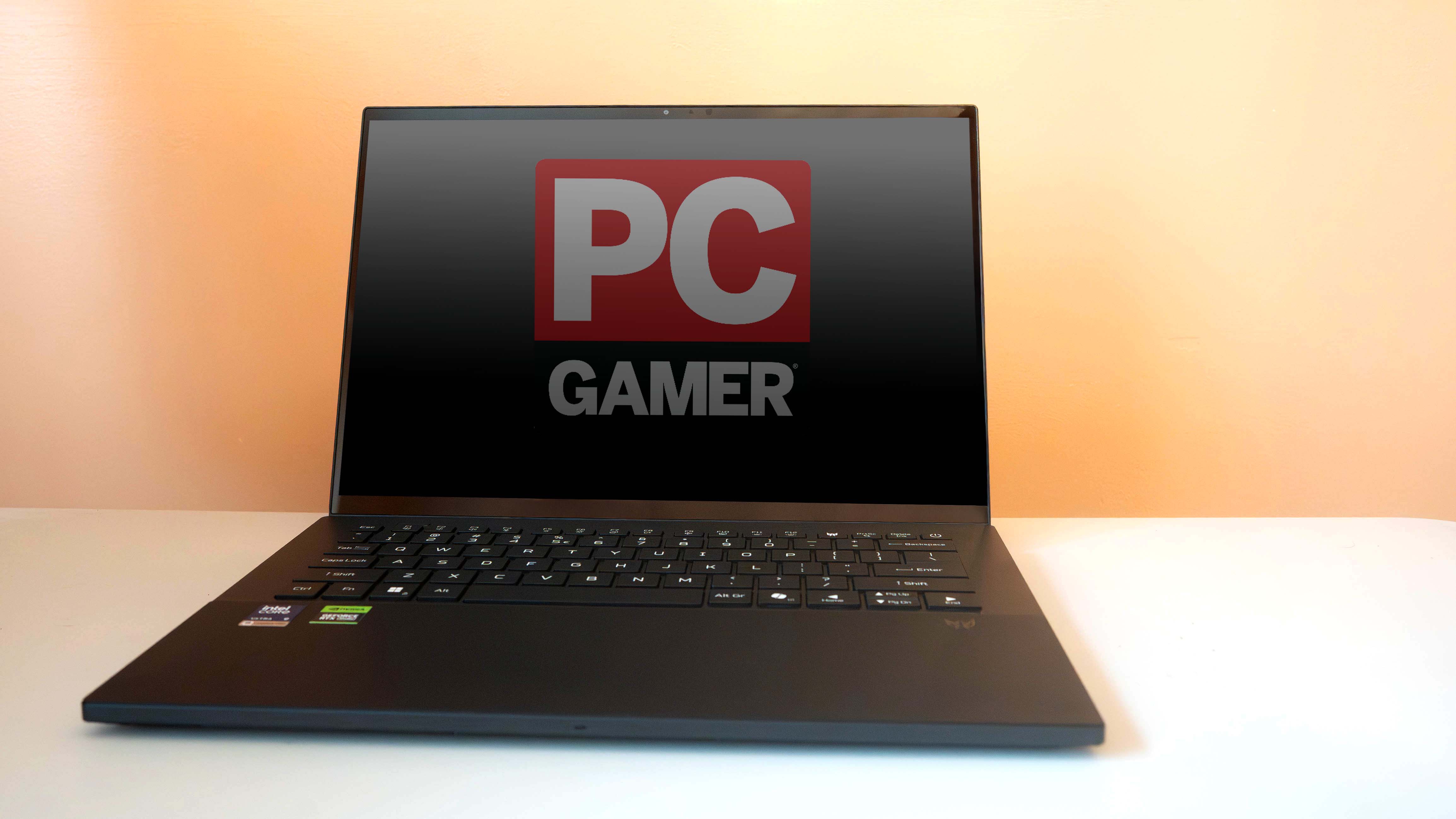
GPU performance is about where you'd expect from a laptop RTX 5070—it has a hard time running Cyberpunk 2077 in ray-tracing ultra mode at native res without DLSS and frame-gen, but slap them on and you get a nice smooth ride.
The CPU is a second-generation Core Ultra—Lunar Lake—with eight cores split between four Performance cores for the processing sledgehammer and four low-power Efficient cores that sip electricity daintily while doing background tasks. There's no hyperthreading from Intel any more, and a total of eight software threads from a chip branded Ultra 9 seems a little stingy when we were getting 20 from a Raptor Lake mobile i9 just a few years ago. You do get a max turbo frequency of 5.1GHz from the P cores, however, and with 32 GB of fast RAM it's a perfectly capable CPU.
In fact, ‘perfectly capable' kind of sums up the Predator Triton. It's an 8 GB RTX 5070 rather than a Ti with 12GB of VRAM, so while it can produce a good result at 1080p pushing the screen to its native resolution can be a bit too much, though GeForce tricks, like Multi Frame Generation certainly help.
We've also come to expect decent battery life from Lunar Lake laptops, and the Triton is no different, managing to stay awake for almost seven hours when playing a looping video, but for less than two hours when gaming. That's not bad for a compact machine, but when unplugged from the mains it drops into Balanced mode, and this produced a drop of 78% in its score in the Time Spy Extreme benchmark.
We know the words ‘compact' and ‘gaming' don't always go well together. Hot components need room to breathe, they yearn to be fanned like an Egyptian princess surrounded by palm leaf-bearing attendants. Graphene thermal paste or not, cramming hot chips into small spaces rarely results in top performance, and in the benchmark suite the Triton is left behind by the new Razer Blade 14, which has a 115W RTX 5070 compared to the Triton's 110W chip, or the Asus ROG Zephyrus G14 with its RTX 5070 Ti. These laptops are, astonishingly, also a bit cheaper than the Triton, making it all a rather hard sell.
The Acer Predator Triton 14 AI looks good on paper, with chips from the newest generations of Intel and Nvidia. And when it comes to gaming it's got the goods too, though it can't quite decide whether it wants to be a gaming or creative machine. What lets it down is that similar laptops from Asus and Razer are cheaper and can perform better, which rather kicks the legs out from under the Triton.

Ian Evenden has been doing this for far too long and should know better. The first issue of PC Gamer he read was probably issue 15, though it's a bit hazy, and there's nothing he doesn't know about tweaking interrupt requests for running Syndicate. He's worked for PC Format, Maximum PC, Edge, Creative Bloq, Gamesmaster, and anyone who'll have him. In his spare time he grows vegetables of prodigious size.
You must confirm your public display name before commenting
Please logout and then login again, you will then be prompted to enter your display name.
